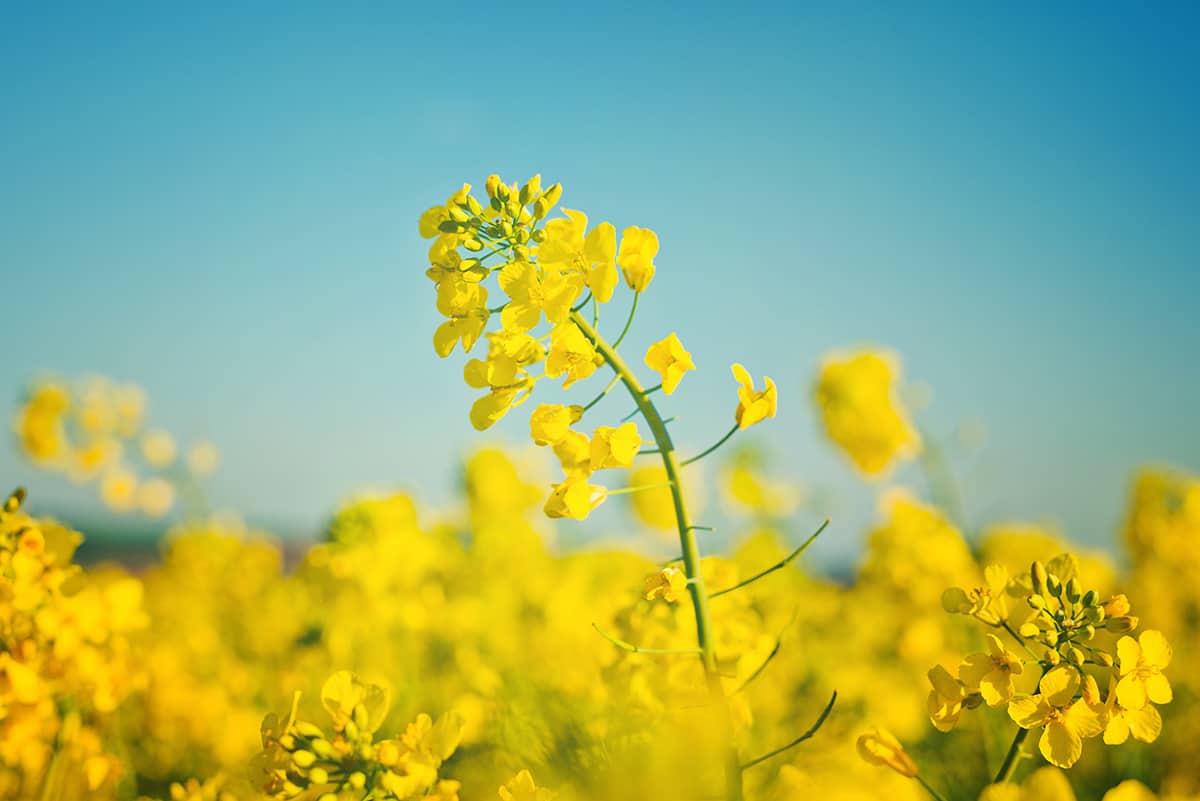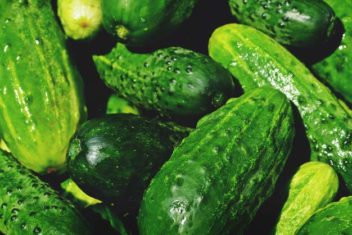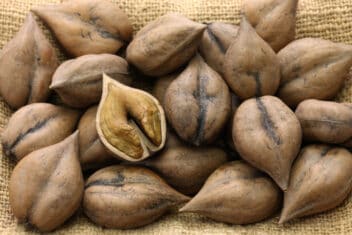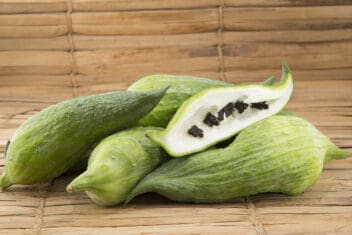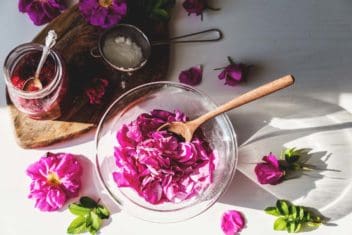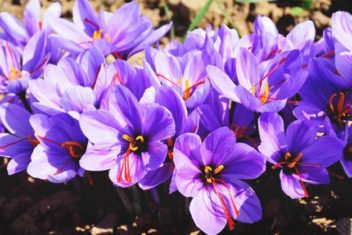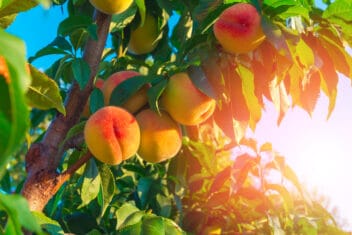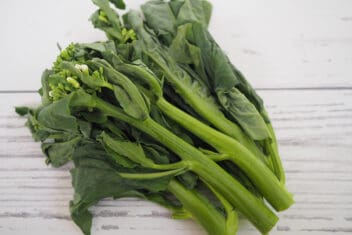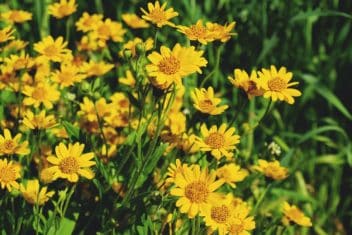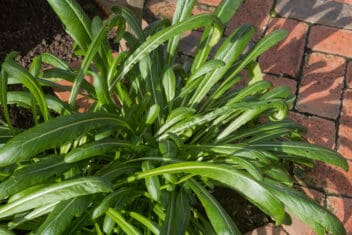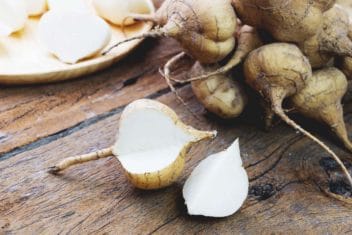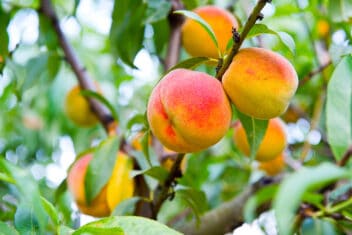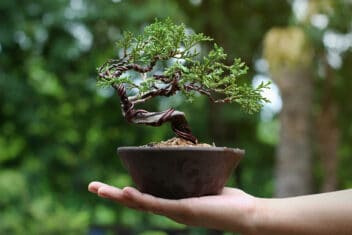Rapeseed is a far more useful plant than it gets credit for. Not only can you use it to make the famous oil, but it makes good forage and an excellent cover crop for both winter and summer. Plus, you can eat the leaves, seeds, and flowers.
Rapeseed oil is often confused with canola oil. That’s because canola and rapeseed are derived from the same plant but often mislabeled as one or the other.
Confused? Let’s get things sorted out and help you learn how to make this plant thrive.
A Primer on Rapeseed
Rapeseed is a member of the cabbage and mustard family. Commercial growers raise it for its oil, which is extracted from the seeds of the plant. It grows somewhere between 3-5 feet tall and is topped with lovely yellow flowers.
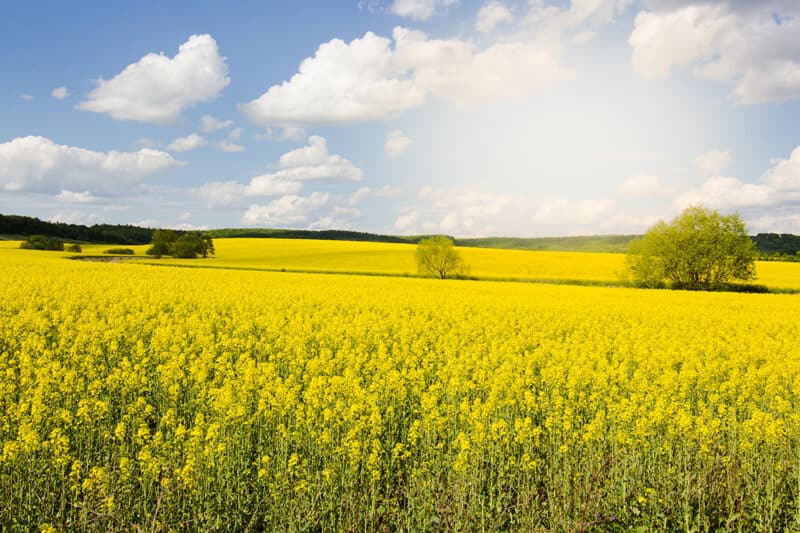
Humans have been cultivating and growing rapeseed for thousands of years to extract the oils to fuel lamps. Originally, it was preferred for industrial applications due to its high level of toxicity in the oil, rather than for human consumption.
Then, in the 1970s, scientists crossbred rapeseed to create a plant that lacked the toxic glucosinolates and erucic acid normally found in the seed. That plant is what we use today to make canola oil.
Commercial farms have since been growing canola in the Pacific Northwest for over 40 years, with growers across the country since the 1990s. Rapeseed has naturalized across Europe and North America.
It’s important to note when you buy seeds to determine if you’re getting a type that is edible or not. If you plan to eat the oil and seeds, you’ll obviously need to get the edible variety.
The seeds are identical to the human eye and can only be told apart by their chemical makeup. Basically, both plants are rapeseed, but only oil from the canola plant is edible. The leaves and flowers are edible no matter which type you choose.
Rapeseed for the Home Grower
Most home growers don’t raise rapeseed for the oil because you need a large planting to get a sufficient amount of oil. The oil extraction process is complicated and lengthy, as well.
In the home garden, rapeseed is an excellent soil conditioner and green manure. You can also use it to deal with a nematode infestation in the soil.
You can also grow rapeseed for the edible leaves, stems, and flowers. It’s an allelopathic plant, as well.
In fact, historically in Britain, rapeseed stems were one of the first greens eaten for the season.
Planting Rapeseed
Even though its a biennial, most people grow rapeseed as an annual. It grows well in temperatures 50°F to 85°F. The best results come from the higher end closer to 70°F.
Plant in full sun. Some cover or grass crops do well in shaded areas, but rapeseed needs plenty of sun to thrive. If you grow for the edible leaves, make sure you get at least 6 hours of sun per day.
Rapeseed is quite forgiving and that’s why it’s a good cover crop. When your soil isn’t performing as well as you need it to, it adds plenty of nutrients to improve things.
For best results, plant in well-draining soil with a pH of 5.5 to 8.5. Rapeseed is tolerant of saline soils as well.
When to Plant
Winter-grown rapeseed or canola should be planted in the fall and dug in or harvested by mid-summer.
Spring-grown rapeseed or canola should be planted in the early spring and dug in or harvested in late summer.
Planting Seed
Though the adult rapeseed plant isn’t terribly fussy, the seeds can be a bit particular. You need to have fine soil for the first inch or so where you’re planting.
Lightly sprinkle the seeds over the garden, and gently pass a rake over the soil, mixing the soil and seeds together. I find it easier to cast the seed out, but you can sow them individually. Plant about an inch deep when planting one at a time.
Water well and keep the soil moist, but not soaking.
If you’re planting seeds individually, space them about 3 inches apart. Rows should be 7 inches apart.
Container Planting
It sounds unusual, since you usually see rapeseed in large fields, but you can grow a few plants in containers, as well.
If you have a variety of rapeseed you intend to eat, rather than use as a cover crop, growing in a container is a good choice.
Use a good quality vegetable container mix and sprinkle a few seeds before covering lightly.
Don’t allow the soil to dry out, but ensure the pot and mix is well-draining so the rapeseed roots don’t sit in water.
Caring for Rape Seed
Now for the easy part: caring for rapeseed.
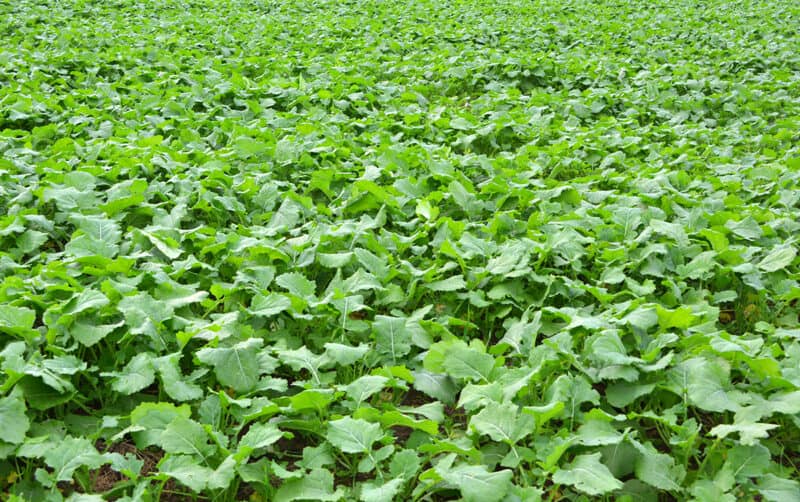
Fertilizer
Because I grow my rapeseed and canola as green manure, I generally don’t fertilize.
If the soil is particularly tired, you can add a little fertilizer to the soil before planting the seed, just to give the rapeseed a head start.
For rapeseed you intend to eat, apply a good layer of well-rotted manure, or well-balanced fertilizer just before sowing the seed.
Water
Rapeseed is sensitive to too much water, but it doesn’t like the soil drying out, either. Keep the soil moist and water deeply once a week.
In particularly dry areas, you may need to water a couple of times a week to keep the soil moist. Just stick your finger into the soil and if it feels dry, add water. The soil should feel like a well wrung-out sponge at all times.
Companion Planting for Growing Rapeseed
Generally, I’ll plant rapeseed on its own unless I’m looking to really feed the soil, or because there are shaded areas where the rapeseed may not thrive.
If you have a spot with a variation in sunlight, put the rapeseed in the sunny area and something like clover in the shaded area.
Other green manure plants include:
- Vetch
- Ryegrass
- Mustard
- Oats
- Winter wheat
- Buckwheat
If you’re growing rapeseed to eat, plant with:
- Peas
- Beans
Common Problems and Solutions for Growing Rapeseed
No plant is completely without problems. Here are a few of the things you might want to watch out for.
Downy Mildew
This common fungus is a problem for many plants, and rapeseed is no different.
A good indication of downy mildew is if you see fluffy white powder on one side of the leaves with a light yellow color to the other side. Your plant may also struggle to thrive.
Use an organic fungicide to control it. Remove all infected plants and leaves and throw them in the garbage. Don’t overcrowd your rapeseed garden as a preventative measure.
Alternaria Leaf Spot
This fungus shows up as dark spots on leaves that turn gray, particularly in warm and wet weather.
To prevent this leaf spot, ensure your garden is healthy with regular water and food, and practice regular crop rotation. Treat with a liquid copper fungicide.
Black Rot
Black rot results in dull, yellowed leaves that turn darker if they get scorched by the sun.
To avoid it, be careful not to splash water from the soil onto the leaves and ensure good crop rotation.
Black rot thrives in humid conditions, so avoid overcrowding.
Sclerotinia Stem Rot
Also known as white mold, if you have sclerotinia stem rot, you may see a white fungus on the stems of rapeseed around the soil line.
To avoid it, control weeds and ensure good airflow between plants. Use an organic foliar fungicide at the first sign of mold on the stems.
Cabbage Aphid
These aphids are hard to see and often keep hidden in the lower leaves of rapeseed.
In large numbers, they can damage the plant enough to make it struggle to thrive.
Use an insecticide as soon as you notice these tiny pests. You’ll often see wilted plants thanks to the aphids sucking the juices out of the plant.
Flea Beetles
Flea beetles are shiny, little black beetles that jump when disturbed.
You’ll know you have them if you see little holes or pits in the foliage of the rapeseed. If the damage is severe, the rapeseed can die, especially when the plant is young.
Make sure to keep the weeds out of your garden. Consider a thick layer of mulch around the rapeseed, along with diatomaceous earth.
Harvesting and Using Rapeseed
The leaves, stems, and flowers can be used from rapeseed. The oil from canola is edible as well.
The leaves are best when they’re young and tender and you can toss them in salads, stir-fries, stews, and casseroles. If you’re eating them raw, they’re best before the rapeseed flowers.
Once the leaves get older, try using them as you would mustard leaves. Steamed with some salt and garlic is particularly delicious.
Many people use rapeseed flowers in sweet dishes and fried for a crispy addition to meats or veggie dishes.
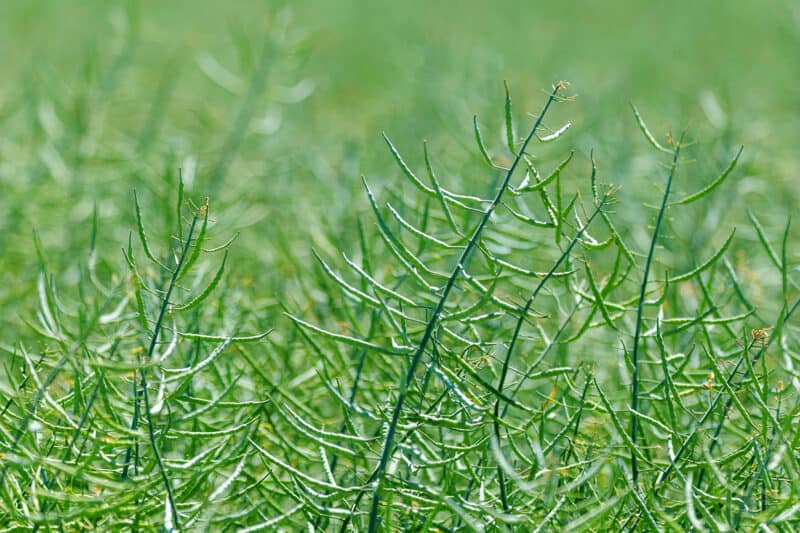
If you grow rapeseed as a cover crop, dig it into the garden before it seeds to prevent it from growing when you don’t want it to.
Rapeseed provides your soil with nutrients, but allow it to rot down for month or so before planting new crops.
